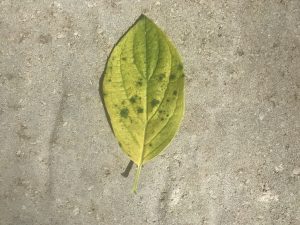The Only Guide for Hydrangea Leaves Turning Yellow
The Only Guide for Hydrangea Leaves Turning Yellow
Blog Article
3 Simple Techniques For Hydrangea Leaves Turning Yellow
Table of ContentsGetting The Hydrangea Leaves Turning Yellow To WorkThe 8-Second Trick For Hydrangea Leaves Turning YellowThe Best Strategy To Use For Hydrangea Leaves Turning YellowThe 9-Minute Rule for Hydrangea Leaves Turning Yellow
Hydrangea plants are recognized for their stunning flowers, however in some cases their leaves can turn yellow. This is normally a sign that something is wrong and the plant needs your help.Nonetheless, Hydrangea leaves transforming yellow can be a reason for worry. There are several reasons Hydrangea leaves turn yellow, and most of them are very easy to deal with. Allow's take a look at one of the most common reasons Hydrangea leaves turn yellow and just how to repair them. Hydrangea leaves generally turn yellow when the plant is overwatered.
When the origins of a plant are immersed in water for extended periods, they start to suffocate and rot. This process cuts off the origins' oxygen supply, triggering the leaves to turn yellow and ultimately pass away. Overwatering can also cause various other problems such as fallen leave decrease, origin damages, and fungal development.
If you think your Hydrangea is overwatered, the best option is to allow the soil dry out entirely before sprinkling once more. It's also a good concept to examine the drain of your pot or yard bed and ensure that water is not merging around the plant's origins. Hydrangea plants need well-drained soil to prosper.
The 5-Minute Rule for Hydrangea Leaves Turning Yellow
You need to also ensure that you are not sprinkling your Hydrangea frequently. Watering when a week ought to be sufficient, and extra commonly if the climate is hot and completely dry. Hydrangea leaves can likewise turn yellow if the plant is not getting enough water. This occurs when the plant does not receive adequate water, and the dirt starts to dry.
This is recognized as "fertilizer burn," It takes place when the plant's origins are exposed to also much fertilizer. Various other signs of plant food burn include brown or yellow fallen leaves, wilting, and stunted development.
This will certainly aid remove any kind of excess fertilizer from the roots of the plant. It's also a great idea to lower the amount of fertilizer you are using. Feeding as soon as a month throughout the growing season should be adequate. If you are utilizing chemical plant food, it's best to make use of one that is diluted and applied according to the manufacturer's guidelines.
9 Simple Techniques For Hydrangea Leaves Turning Yellow

If your Hydrangea is infested with bugs, dealing with the plant with neem or gardening oil is the most effective service. It's additionally excellent to remove any kind of afflicted fallen leaves from the plant. You can do this by hand or with a set of trimming shears. It's likewise an excellent idea to check the plant routinely for parasites and remove them as quickly as you see them.
Hydrangea leaves can also transform yellow if the temperature level stresses the plant. The fallen leaves of the plant will certainly transform yellow and begin to drop off.
If the temperature emphasizes your Hydrangea, you require to relocate the plant to an area where it will be protected from the extreme chilly or heat. You can additionally attempt to provide the plant with some partial shade if exposed to route sunshine. You can likewise try adding mulch around the plant base to assist manage this article the temperature level.
Not known Facts About Hydrangea Leaves Turning Yellow
The fallen leaves can additionally turn yellow if the Hydrangea plant has root rot. This is generally brought on by overwatering or inadequate water drainage. When the plant's origins are immersed in water for as well long, they start to rot. Among the most common origin rot symptoms is yellowing leaves, as the fungi prevents the origins from absorbing nutrients from the dirt.
Other indications of origin rot consist of stunted development, wilting, and leaf drop. Check the origins of your Hydrangea if it has origin rot. If they are black or brownish, then they are possibly click here now rotten. If some healthy and balanced roots are left, you can try to conserve the plant by replanting it in a new pot with fresh soil.
If your Hydrangea is greatly affected by origin rot, starting with a new plant is best. As Hydrangeas age, their fallen leaves will gradually turn yellow and brownish before falling off the plant.
You can assist the plant by ensuring it is getting enough water and nutrients. You can likewise mulch around the plant base to aid it preserve dampness. There are a number of reasons hydrangea leaves may turn yellow and drop off. Hydrangea Leaves Turning Yellow. One possibility is that the useful source plant is not getting sufficient water.
Report this page